Tim O’Reilly, founder of O’Reilly Media addressed the audience of the Web 2.0 Expo with a series of challenging questions. I felt happy that so many people I know are already answering this call “to do something worthy” with Web 2.0 and “to make technology that matters.” However, many of these people were not at the Web 2.0 Expo. This is, in part, because as O’Reilly pointed out:
if you look at the focus of a lot of what you call ‘Web 2.0,’ the relentless focus on advertising-based consumer models, lightweight applications, we may be living in somewhat of a bubble, and I’m not talking about an investment bubble. (It’s) a reality bubble.”
But as I explored the conference and expo, I did find friends, old and new, dedicated to figuring out how to use Web 2.0 to make a better world.
Caroline McCarthy has an excellent post, on CNET news on the message of Tim O’Reilly’s keynote address.
If you have read Ugotrade before you already know the threads I have been following re the potential for virtual worlds for positive global development and to reduce the carbon footprint of business, so some of McCarthy’s comments caught my attention:
There’s an inherent irony in what O’Reilly said, given the fact that massive conferences like the Web 2.0 Expo are packed with the trendspeak and hype that birthed SuperPoke-like entertainment, and certainly aren’t helping the environment by distributing tons of press kits and swag–not to mention flying in hundreds of attendees in a massive spurt of carbon emissions.
To be fair, O’Reilly Media has been printing fewer event programs and encouraging conference goers to recycle, and it has used carpeting made of post-consumer material.
There is clearly a lot that needs to change, and perhaps the tech industry trend of large-scale conferences is part of it. We’ll see whether Silicon Valley’s leaders and moguls are willing to do what they think is right, rather than what they think is profitable.
But, as Tim O’Reilly pointed out, the huge problems we face today create an enormous amount of opportunity for us to find creative solutions.
“We are going to figure out how to make a better world using the power of the web.” O’Reilly
Virtual World technology will soon, play a major role in re-imagining these tech industry large-scale conferences. There is an talented and dedicated community of open source developers working hard to take this nascent area of Web 2.0 technology mainstream through open source, open standards, and open API’s. I am so proud to be part of this global community!
Virtual Worlds were only a very small part of the Web 2.0 Expo. W. James Au’s “The Post-Hype State of Virtual World Marketing: What Works, What Doesn’t and Why” was the only panel I noticed focusing on Virtual Worlds in any of the main tracks. This reflects the relative lack of integration of virtual worlds into Web 2.0.
One of my passions is to make this isolation of virtual world technology from Web 2.0 a thing of the past (see my upcoming post on Rob Smart’s, IBM, integration of JSON support into OpenSim – which is a vital step towards Web 2.0 made easy for OpenSim).
But, as W. James Au pointed out very eloquently, this notion of isolation is really not accurate, even now. For example, Second Life communities interact in myriad and powerful ways with other social media communities on the web despite the current lack of common protocols that have kept immersive virtual worlds architecturally cut off from some of the networking effects of Web 2.0.
But, for all of us living here in the US, O’Reilly’s most important message was simple and fundamental. So let’s reblog, retweet, plurk, friendfeed, facebook, send it out on notecards in SL, make machinima, and spread the word in every way available to us.
“Bad politicians are elected by good people who don’t vote.”
“There is no reason in 2008 to do shit you hate, ‘cos you can lose just as much money being happy as hell.”
Quote and pic above from Gary Vaynerchuk’s keynote, Web 2.0 Expo, 2008 (also see Execute on Being you).
“Do something you love,” Vaynerchuk
I personally can’t wait until the potent mix of real time interaction in immersive spaces is combined with the networking effects of Web 2.0. Not just because this will unleash an awesome new wave of innovation and creativity but the early adopters I have met in immersive virtual worlds, and the phenom developers in the rapidly growing open source communities of this emerging technology, have passion, do stuff they love, and do stuff that is worthy, w00t!
And further: “Do Something Worthy,” O’Reilly
While speakers and exhibitors from virtual worlds were scant in the main hall and panel tracks, Second Life had a strong showing in the “Do Something You Love,” “Do something that need’s to be done” zone of the Not For profit strip. “Create more value than you capture” (from O’Reilly’s keynote) is the natural heart of their mission.
Below is the awesome Evonne Heyning ( InKenzo in Second Life) of Amoration.
What is Amoration?
AMO:Â The root of love
~ation:Â The state of being, practice and study
Amoration:Â living in love, a practice of open engagement
Our Mission:Â To Create a Culture of Conscious Compassion
Evonne addressed the problem of the Not For Profit’s being in an out of the way strip in the Expo hall with some very tasty peanut brittle.
In Contrast, the MS Surface crew, in a prime location, playing with super shiny things, did not have to do much to keep a crowd at their table!
I IMed my friend Kyle Gomboy (G2 Proto in SL) from the Microsoft Development Community in Second Life and in OpenSim to ask him if the Microsoft .net, technet, and c# developers in OpenSim had any plans to integrate Surface with OpenSim. I saw the Surface/Virtual Earth integration and realized Surface with OpenSim would be hotness for a small company looking to develop a vertical for hospitality, medicine, or education. At between 12 to 15K with SDK and two days training, Surface is priced in a range a small company can probably afford.
G2 also came up with a thought that would bring shiny together with worthy when he mentioned to me how great it would be to see Surface in every public school library in the country.
See Rik Riel’s blog for a nice video of the MS Surface demo in the expo hall.
“The Making of Second Life,” W. James Au’s book signing
From left to right, Rik Rik Panganiban from Global Kids (Rik Riel in SL), Joyce Bettencourt, Rhiannon Chatnoir, in SL, W. James Au, (Hamlet Au in SL), Evonne Heyning ( InKenzo in Second Life), Jennifer Schlegel (Schlink Lardner in SL).
And further more: “Make technologies that matter,” O’Reilly
One of the highlights for me of w2e was getting an inside look at the Interop NOC and meeting Bill “WEJ” Jensen the Troubleshooting Lead of the InteropNETteam (WEJ center sitting at the Mac).
The Interop NOC is a “real” world work of art – “the largest temporary network in the world” where voluteers have come together with industry leaders to take on the ultimate network challenge – “creating a completely interoperable network using the industry’s most cuting edge technology.”
If you have been reading Ugotrade you will know I have been following the work of Michael Osias, IBM, (Illuminous Beltran in SL) who has been creating virtual network operation centers (VNOCs) in OpenSim (for more see here). I am looking forward to introducing “WEJ” to Michael’s work which I believe foreshadows a new era for software – along the lines Gelertner first envisioned in 1992. Michael follows the Gelertner vision pretty closely.
Gelertner talks about software as an embodied information machine. And, as virtual worlds come of age so will this notion of software as 3d info machines that we can walk around, tinker with, and hang out in with other avatars and agents in real time.
Mirror Worlds will transform the meaning of “computer.†Our dominant metaphor since 1950 or thereabouts, “the electronic brain,†will go by the boards. Instead people will talk about crystal balls, telescopes, stained glass windows, wine, poetry, or whatever – things that make you see vividly.
Software today offers assistance to the specialist (in everybody) not to the citizen. The mere citizen deals with the increasingly perilous complexity of his government, business, transportation, health, school, university and legal systems unaided. Mirror Worlds represent one attempt to change this state of affairs (Mirror Worlds, David Gelertner 1992).
More on VNOCs in an upcoming post.


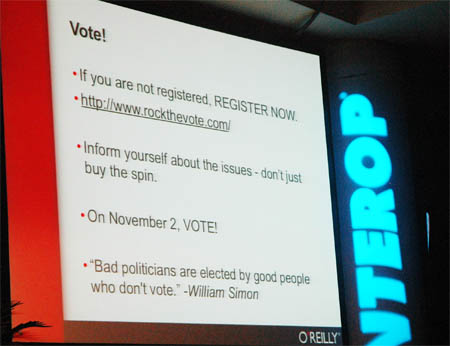
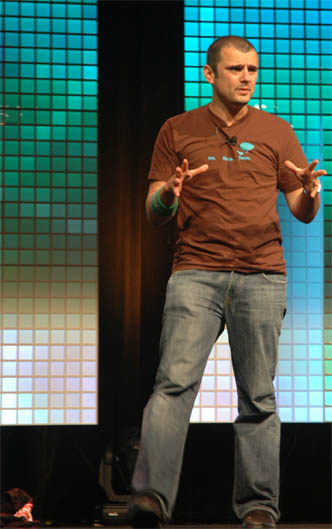
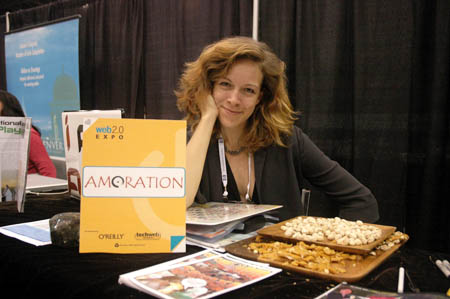
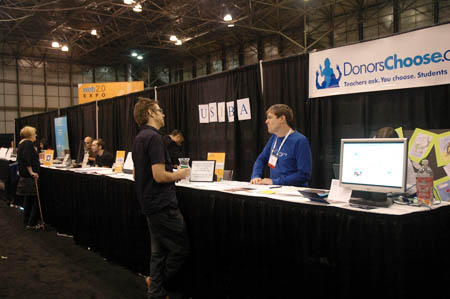

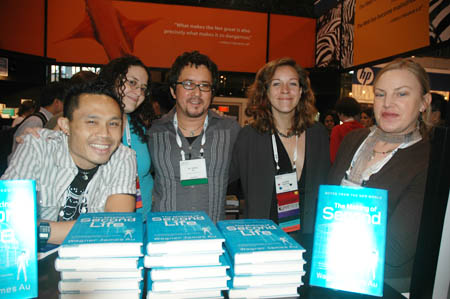
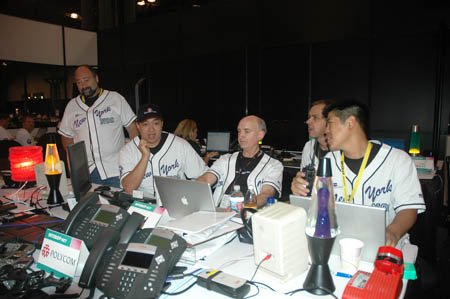
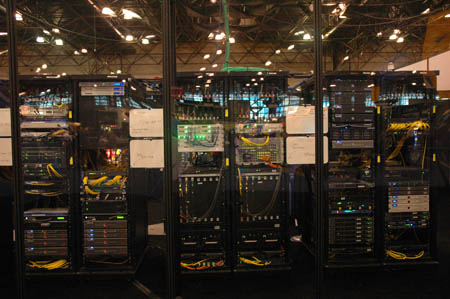
0 Comments For This Post
2 Trackbacks For This Post
September 19th, 2008 at 6:22 pm
[...] O’Reilly: “What Will You Do With Web 2.0?†[...]
November 2nd, 2008 at 11:19 pm
[...] Tim O’Reilly has outlined some of the world’s big problems in his talks, and urged technologists to “work on stuff that matters.” I was one of O’Reilly’s listeners at the Web 2.0 Expo in NYC (see my post here). [...]